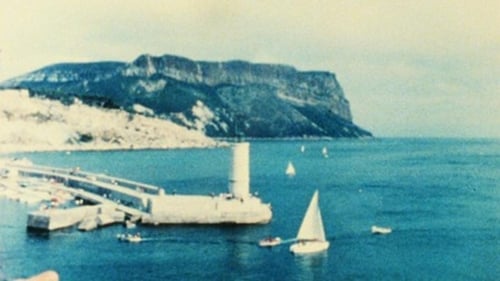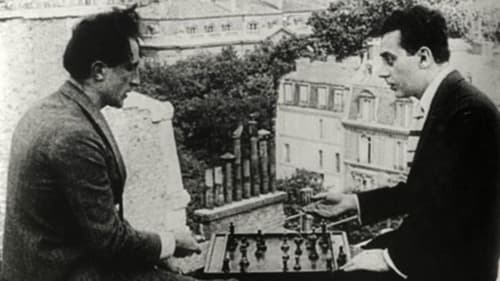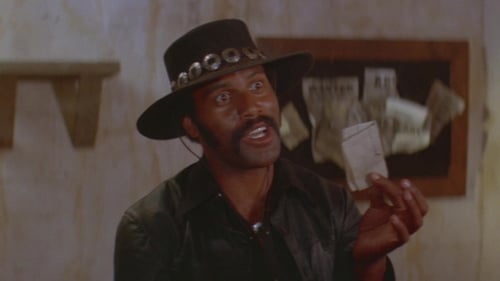Swamp (1969)
Género :
Tiempo de ejecución : 6M
Director : Robert Smithson, Nancy Holt
Sinopsis
The action of the film is direct: Holt walks through the tall grasses of a swamp while filming with her Bolex camera, guided only by what she can see through the camera lens and by Smithson's verbal instructions. The viewer experiences the walk from Holt's point of view, seeing through her camera lens and hearing Smithson's spoken directions. Vision is obstructed and perception distorted as they stumble through the swamp grasses.

"I was visiting Jerome Hill. Jerome loved France, especially Provence. He spent all his summers in Cassis. My window overlooked the sea. I sat in my little room, reading or writing, and looked at the sea. I decided to place my Bolex exactly at the angle of light as what Signac saw from his studio which was just behind where I was staying, and film the view from morning till after sunset, frame by frame. One day of the Cassis port filmed in one shot." -JM

Stop-motion photography blends with extreme slow-motion in Clair's first and most 'dada' film, composed of a series of zany, interconnected scenes. We witness a rooftop chess match between Marcel Duchamp and Man Ray, a hearse pulled by a camel (and chased by its pallbearers) and a dizzying roller coaster finale. A film of contradictions and agreements.

Jack Powell (Charles Rogers), un joven que vive en una pequeña ciudad de Estados Unidos en 1917, está enamorado de la sofisticada Sylvia Lewis (Jobyna Ralston) y se siente irritado por las constantes atenciones de la chica de la casa de al lado, Mary Preston (Clara Bown), Sylvia está a su vez enamorada del rico heredero David Armstrong (Richard Arlen), aunque su relación se ve interrumpida cuando los dos jóvenes se alistan en el Ejército. Tras un periodo de enfrentamiento, entran en las Fuerzas Aéreas y Jack y David conocen al cadete White (Gary Cooper), quien les sirve de inspiración para sus futuros combates aéreos. Drama bélico que ha pasado a la historia por ser el primer film que ganó el Oscar a la mejor película, el año de la creación de los premios de la Academia americana (años 1927-1928).

Lee Hayden es un actor de doblaje retirado e ícono del Western, pero sus mejores días y actuaciones han quedado atrás. Lee vive recordando sus años de gloria y fumando marihuana hasta que un diagnóstico de cáncer cambia sus prioridades. Ahora él tratará de reconciliarse con su hija distanciada, y buscará un último papel para consolidar su legado como actor.

"...Nekes retreats behind his film. What is left is a double portrait, in which neither Dore 0. nor the grand landscape remain unchanged. The cold of the icy coastline - long shots of stones, snow and the sea - dwindles away before the image of Dore 0. Solitude is superflous, when the grandiose mountain meadow invites somersaults. ... In this case Nekes handles what he shows considerately. He releases the objects he portrays. He allows them to unfold. And so model and patterns actually serve another purpose: to let poetry grow, and energy and beauty and confidence nell'abbandono." (Dietrich Kuhlbrodt, Filmkritik, 9/1971).

A part of Werner Nekes' lyrical anthology DIWAN.

Largometraje dividido en cinco episodios: Sun-a-Mul, Alternatim, Kantilene, Moto y Hynningen, Diwan es una película puertas afuera con gente. Con gente que no es ni más ni menos que una parte de la preciosa y exquisitamente fotografiada naturaleza que la rodea. Lo que Nekes logra con paisajes, en un medio que avanza en el tiempo -cómo derrota a un tiempo que modifica las cosas al emplearlo para modificar el paisaje, cómo perturba o destruye las leyes de la cronología a través del mecanismo de rebobinado de la cámara- es un proyecto experimental cautivante.

An attempt to transform a Roman Western into a Greek tragedy.

“The changing dots, ectoplasmic shapes and electronic music of L. Schwartz’s ‘Mutations’ which has been shot with the aid of computers and lasers, makes for an eye-catching view of the potentials of the new techniques.” – A. H. Weiler, N. Y. Times

Basada en los escalofriantes eventos de la vida real, esta historia muestra el aterrador encuentro de una pareja con las fuerzas oscuras de lo sobrenatural. En 1930, el Reverendo Lionel Foyster y su esposa Marianne se mudan a la Rectoría de Borley cuando el Reverendo Foyster es nombrado rector de la parroquia. La pacífica estadía de la pareja pronto se ve irrumpida por una serie de sucesos inexplicables que rápidamente se convierten en una pesadilla. Ahora, el Reverendo Foyster y Marianne deben descubrir los secretos mortales de la Rectoría para evitar convertirse en otra nota trágica en la oscura historia de La Casa Más Embrujada de Inglaterra.

"His films are like a roller-coaster. His way of throwing the act of seeing into utter confusion is an attack on the eyes in their corporeal function, and to attack the eyes is to take on tile body itself as your opponent. The film makes you break out in sweat only by shooting a safe, peaceful gymnasium in the dark." - Koharu Kisaragi

Film in Which There Appear... is a six-minute loop of the double-printed image of a "China girl" or "Shirley card", her image off-center, making visible the sprocket holes and edge lettering on the film. According to Land, within the loop, "no development in the dramatic or musical sense" occurs. Fred Camper described Film in Which There Appear... as "a kind of Duchampian found object, a [...] film that focuses attention on the medium and the viewer."

Duras narrates a short story while the camera travels through the streets of Paris with short interludes of solemn music.

Short documentary of David Lynch building a lamp.

Two black bounty hunters ride into a small town out West in pursuit of an outlaw. They discover that the town has no sheriff, and soon take over that position, much against the will of the mostly white townsfolk.

Johnny, un joven del siglo XXI con chips implantados, se gana la vida transportando datos valiosos que almacena en su cerebro. Dos científicos lo contratan para que haga de mensajero de una información robada. Demasiado material para su capacidad de almacenaje, pero Johnny no duda en inyectarse una ampliación de memoria y cumplir con el encargo. Sin embargo, debe acabar el trabajo y deshacerse de ese material si no quiere morir a causa de la sobrecarga. La vida se le complica cuando una organización criminal desea hacerse con la información o, lo que es lo mismo, con su cabeza.

Viola's seminal piece, The Reflecting Pool, was made three decades ago on analogue video tape and yet could easily pass for a contemporary digital piece; in it, Viola emerges as central protagonist from a thick forest into a clearing filled by an artificial pool. As the noise of an aeroplane slowly passes and fades overhead, Viola approaches the edge of the pool, whereby he removes his shoes, squats down yelling and then prepares to make a powerful jump.

A compilation of over 30 years of private home movie footage shot by Lithuanian-American avant-garde director Jonas Mekas, assembled by Mekas "purely by chance", without concern for chronological order.

En 2013, el analista informático Edward Snowden filtró documentos clasificados que había obtenido de la NSA, la Agencia de Seguridad Nacional Norteamericana, detallando la vigilancia que el gobierno estadounidense ejerce sobre sus ciudadanos. Después de pasar a la clandestinidad para evitar la extadición y el arresto, Snowden pasó a convertirse en noticia. Tanto que su notoriedad amenazaba con eclipsar las implicaciones de la información que había revelado.

Ivan Ladislav hides a true chamber of wonders behind the clear, mathematically abstract structure of his films and videos, meticulously compiled rhythmically frame for frame, each work likewise presenting an analysis of the film medium. Concealed therein, culled from deep in the medium’s prehistory, are hermetic parallel universes in whose number ranges and symbolic spaces, Galeta’s precisely constructed film compositions find a formalist anchor.












